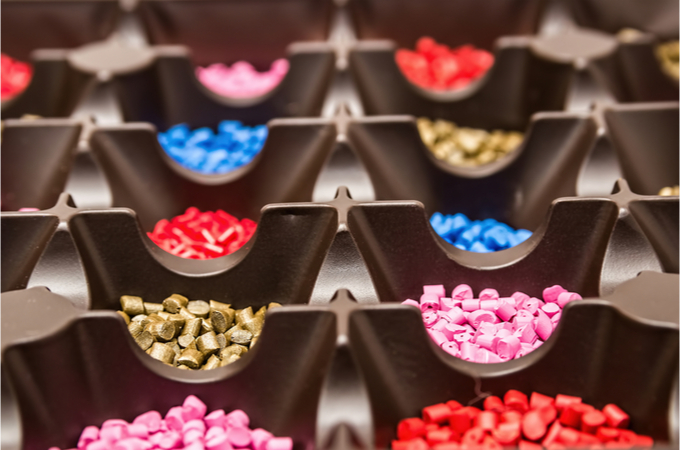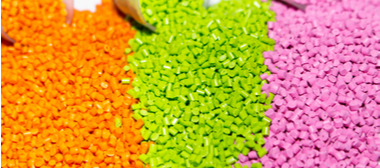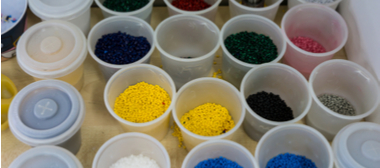
All too often in manufacturing, one process is assumed to be the only “correct” choice for a solution, discounting all other methods. These assumptions snowball over time into “conventional wisdom,” and become the only accepted way of doing things — even as other processes may end up being more suitable for specific scenarios.
The broad array of manufacturing processes available — and advances in efficiency and the technology that supports core manufacturing processes — means that it’s well worth taking so-called conventional wisdom with a grain of salt when considering which method is best for a specific project. Depending on the particular requirements of a job, the “best” solution may end up being a surprise.
Plastic injection molding is one such method that can often be overlooked for many types of projects where conventional machining is widely assumed to be the No. 1 choice. In fact, injection molding can often produce the results required for a project that might otherwise be carried out via machining in a more cost-effective way.
Before we take a more in-depth look at which types of projects can benefit from using plastic injection molding instead of conventional machining, let’s examine what types of qualities or metrics we’re defining when we discuss the “best” solution for a job:
- Cost-efficiency: Completing a project in the most cost-effective manner possible is,
 unsurprisingly, one of the primary concerns of manufacturing facilities and their customers alike. Wasted time and effort in a manufacturing process can impact the bottom line for the customer. What’s more, these can have a material positive or negative impact on a manufacturing service provider’s reputation and likelihood of repeat customers. Cost-effective manufacturing is a major factor when discussing the “best” solution for a project — but it’s far from the only one, as you’ll see below.
unsurprisingly, one of the primary concerns of manufacturing facilities and their customers alike. Wasted time and effort in a manufacturing process can impact the bottom line for the customer. What’s more, these can have a material positive or negative impact on a manufacturing service provider’s reputation and likelihood of repeat customers. Cost-effective manufacturing is a major factor when discussing the “best” solution for a project — but it’s far from the only one, as you’ll see below. - Quality: While cost-efficiency is a primary goal of any entrepreneur and manufacturer, it should never be pursued to the point where the quality of the finished product suffers below an acceptable rate. “Quality,” in this context, can have several meanings: For instance, it certainly refers to the integrity and safety of the finished product, but it can also refer to the agreed-upon rate of rejected parts in a process. The flip side of quality as a consideration is that a part does not need to be “over-produced,” that is, manufactured to a level of quality above that which provides value, safety, and/or utility to the customer and/or the end user.
- Cost-efficiency: Completing a project in the most cost-effective manner possible is,
Time: Time — in manufacturing as in most other areas of business — is money. While production time plays a part in the cost-efficiency of a process, it does merit its own mention in this discussion. When considering the overall benefits of one process over another, taking a big-picture look at how production time will be impacted should be a part of your assessment.
Now that we have a clear understanding of the major factors that should be taken into consideration when choosing a manufacturing process, let’s cover some of the most common situations in which plastic injection molding can provide advantages in any or all of those areas over conventional machining.
Plastic injection molding can be a viable solution over conventional machining in situations such as:
Quantities over 1,000 pieces. For part runs over 1,000 pieces, injection molding provides major cost-efficiency and time benefits over conventional machining. This is, of course, assuming that the product can acceptably be manufactured from an injection molding resin instead of metal — which will oftentimes be true, and which we’ll discuss further below. Machines parts are produced one at a time, instead of with several or many at a time, as is often the case in injection molding (depending on the size and configuration of the part). By producing more parts in one process, production time and thus production cost is drastically reduced.
When repeatability is a critical concern. Repeatability — or the ability to produce many parts within a small range of tolerance with materially identical qualities from piece to piece — is quite often a big concern in a manufacturing job. Especially for higher production runs, parts should be materially identical at a very high rate — identifiable variance is often unacceptable. Plastic injection molding provides extremely high repeatability, especially as compared to conventional machining, where the fact that each part is produced individually naturally introduces more margin for variability.
 When plastic can meet the material properties required. It’s often assumed that plastic cannot serve as a substitute for a project designed for a metal. In many cases, that’s true: For example, no plastic resin can offer the strength of tool steel. In other cases, however, plastic resins can offer a similar level of strength and hardness to that of softer metals like aluminum — or at least can meet the structural requirements of the job. This is another case where “over-production” plays a factor: If a metal like aluminum is used simply because it is assumed that it should be, while a harder resin can provide enough strength and durability to meet the base requirements of the part, a huge waste in material and production expenditure is occurring. Be sure to review the material property requirements of the job and the end application of the part and product to ensure that you’re not using a more expensive material and process than required.
When plastic can meet the material properties required. It’s often assumed that plastic cannot serve as a substitute for a project designed for a metal. In many cases, that’s true: For example, no plastic resin can offer the strength of tool steel. In other cases, however, plastic resins can offer a similar level of strength and hardness to that of softer metals like aluminum — or at least can meet the structural requirements of the job. This is another case where “over-production” plays a factor: If a metal like aluminum is used simply because it is assumed that it should be, while a harder resin can provide enough strength and durability to meet the base requirements of the part, a huge waste in material and production expenditure is occurring. Be sure to review the material property requirements of the job and the end application of the part and product to ensure that you’re not using a more expensive material and process than required.
When cost control is a factor. Simply put, sometimes costs on a job must be lowered. At these times, it is well worth discussing any and all possibilities for using plastic injection molding instead of conventional machining. For example, overmolding can be used to combine metal and plastic construction, using only the metal required for strength and stability at critical points. As always, the quality and integrity of a part should never be in question, but there will typically be avenues to explore where injection molding can be used in some way to manage costs. Be sure to discuss your needs and options with your manufacturing partner.
Ultimately, keep in mind that every project is different in its own way. There’s rarely a blanket solution that should be followed without further research and discussion. As always, take the specifics of your project into account when considering the points above.

 unsurprisingly, one of the primary concerns of manufacturing facilities and their customers alike. Wasted time and effort in a manufacturing process can impact the bottom line for the customer. What’s more, these can have a material positive or negative impact on a manufacturing service provider’s reputation and likelihood of repeat customers. Cost-effective manufacturing is a major factor when discussing the “best” solution for a project — but it’s far from the only one, as you’ll see below.
unsurprisingly, one of the primary concerns of manufacturing facilities and their customers alike. Wasted time and effort in a manufacturing process can impact the bottom line for the customer. What’s more, these can have a material positive or negative impact on a manufacturing service provider’s reputation and likelihood of repeat customers. Cost-effective manufacturing is a major factor when discussing the “best” solution for a project — but it’s far from the only one, as you’ll see below.
